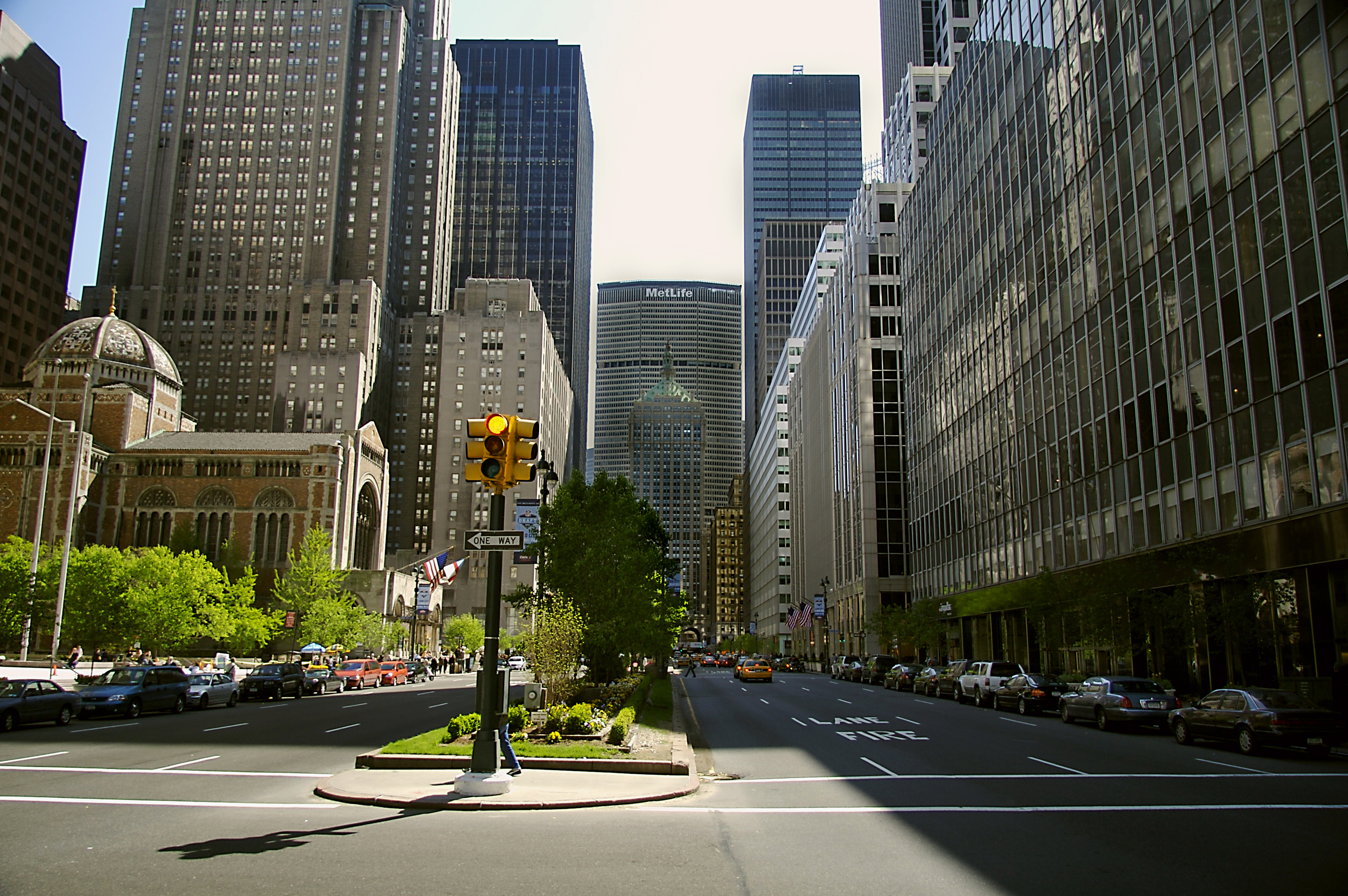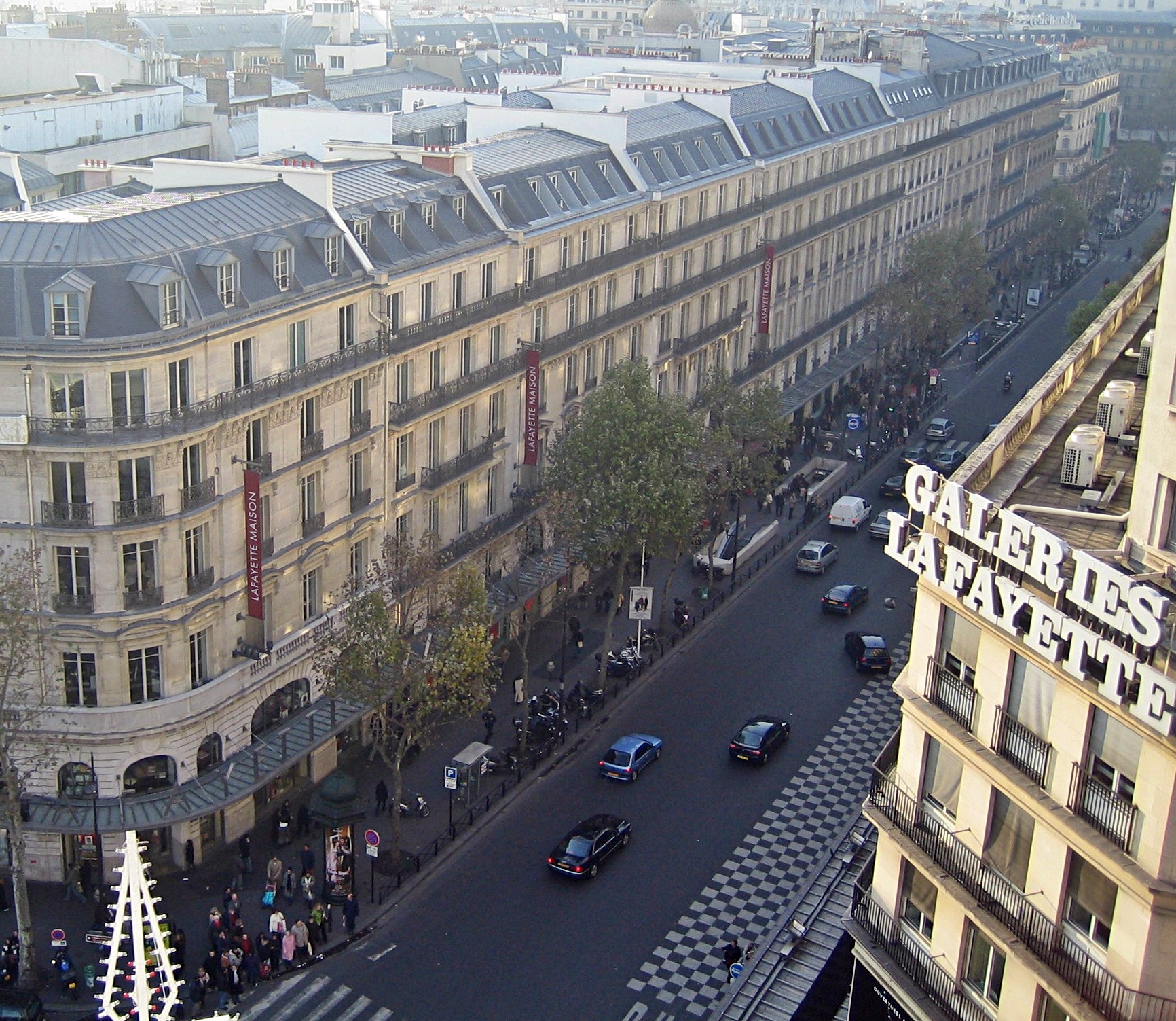|
Cours De Vincennes
The Cours de Vincennes (formerly Avenue de Vincennes) is a street in Paris, linking place de la Nation to porte de Vincennes. It forms a major artery and serves as the border between the city's 12th and 20th arrondissements. It was built before 1860 and forms the start of Route nationale 34. Junctions On its south side it has junctions with: * boulevard de Picpus * rue Marsoulan, formerly rue Ruty, renamed 1912 * avenue du Docteur-Arnold-Netter, part of avenue du Général-Michel-Bizot until 1962 * passage de la Voûte * boulevard Soult On its north side it has junctions with: * boulevard de Charonne * rue Lucien-et-Sacha-Guitry, known as rue Lucien-Guitry until 1969 * rue Félix-Huguenet * rue des Pyrénées * rue des Maraîchers * rue du Général-Niessel * boulevard Davout Buildings References {{coord, 48.8473, N, 2.4048, E, source:wikidata, display=title Vincennes Vincennes Vincennes (, ) is a commune in the Val-de-Marne department in the eastern suburbs o ... [...More Info...] [...Related Items...] OR: [Wikipedia] [Google] [Baidu] |
Dictionnaire Historique Des Rues De Paris
''Dictionnaire historique des rues de Paris'' (''Historical Dictionary of the Streets of Paris'') is a book by Jacques Hillairet, a historian specializing in the history of Paris. It includes 5344 streets in two volumes and 2343 illustrations. It was first published in 1960 by éditions de Minuit and was regularly re-published and updated from 1963 onwards. His sources included '' Dictionnaire administratif et historique des rues de Paris et de ses monuments'' by Louis and Félix Lazare (first edition, 1844) and ''Histoire de Paris rue par rue, maison par maison'' by Charles Lefeuve (issued from 1863). Hillairet died in 1984 and the work is now written and edited by Pascal Payen-Appenzeller, who wrote the eleventh edition in 2004. in the BNF The dictionary has received ... [...More Info...] [...Related Items...] OR: [Wikipedia] [Google] [Baidu] |
Boulevard De Charonne
A boulevard is a type of broad avenue planted with rows of trees, or in parts of North America, any urban highway. Boulevards were originally circumferential roads following the line of former city walls. In American usage, boulevards may be wide, multi-lane arterial thoroughfares, often divided with a central median, and perhaps with side-streets along each side designed as slow travel and parking lanes and for bicycle and pedestrian usage, often with an above-average quality of landscaping and scenery. Etymology The word ''boulevard'' is borrowed from French. In French, it originally meant the flat surface of a rampart, and later a promenade taking the place of a demolished fortification. It is a borrowing from the Dutch word ' 'bulwark'. Usage world-wide Asia Cambodia Phnom Penh has numerous boulevards scattered throughout the city. Norodom Boulevard, Monivong Boulevard, Sihanouk Boulevard, and Kampuchea Krom Boulevard are the most famous. India *Bengaluru's Mah ... [...More Info...] [...Related Items...] OR: [Wikipedia] [Google] [Baidu] |
Lycée Hélène-Boucher
In France, secondary education is in two stages: * ''Collèges'' () cater for the first four years of secondary education from the ages of 11 to 15. * ''Lycées'' () provide a three-year course of further secondary education for children between the ages of 15 and 18. Pupils are prepared for the ''baccalauréat'' (; baccalaureate, colloquially known as ''bac'', previously ''bachot''), which can lead to higher education studies or directly to professional life. There are three main types of ''baccalauréat'': the ''baccalauréat général'', ''baccalauréat technologique'' and ''baccalauréat professionnel''. School year The school year starts in early September and ends in early July. Metropolitan French school holidays are scheduled by the Ministry of Education by dividing the country into three zones (A, B, and C) to prevent overcrowding by family holidaymakers of tourist destinations, such as the Mediterranean coast and ski resorts. Lyon, for example, is in zone A, Marseille is ... [...More Info...] [...Related Items...] OR: [Wikipedia] [Google] [Baidu] |
Art Déco
Art Deco, short for the French ''Arts Décoratifs'', and sometimes just called Deco, is a style of visual arts, architecture, and Industrial design, product design, that first appeared in France in the 1910s (just before World War I), and flourished in the United States and Europe during the 1920s and 1930s. Through styling and design of the exterior and interior of anything from large structures to small objects, including how people look (clothing, fashion and jewelry), Art Deco has influenced bridges, buildings (from skyscrapers to cinemas), ships, ocean liners, trains, cars, trucks, buses, furniture, and everyday objects like radios and vacuum cleaners. It got its name after the 1925 International Exhibition of Modern Decorative and Industrial Arts, Exposition internationale des arts décoratifs et industriels modernes (International Exhibition of Modern Decorative and Industrial Arts) held in Paris. Art Deco combined modern styles with fine craftsmanship and rich materials ... [...More Info...] [...Related Items...] OR: [Wikipedia] [Google] [Baidu] |
20e Arrondissement De Paris
The 20th arrondissement of Paris (known in French as the ''XXe arrondissement de Paris'' or simply as "''le vingtième''") is the last of the consecutively numbered arrondissements of the capital city of France. Also known as Ménilmontant () after the Ménilmontant neighbourhood it encompasses in its northwest, it is located on the right bank of the River Seine and contains some of the city's most cosmopolitan districts. It covers four quarters: Belleville, Saint-Fargeau, Père-Lachaise and Charonne. In 2019, it had a population of 194,994. The 20th arrondissement is internationally best known for its Père Lachaise Cemetery, the world's most-visited cemetery where one can find the tombs of a number of famous artists. Geography The land area of this arrondissement is 5.984 km2 (2.31 sq. miles, or 1,479 acres). Demographics The population of Paris's 20th arrondissement peaked in 1936, when it had 208,115 inhabitants. Today it remains very dense in population and business ... [...More Info...] [...Related Items...] OR: [Wikipedia] [Google] [Baidu] |
Printemps (grands Magasins)
Printemps (; , ) is a French chain of department stores (, ) with a focus on beauty, lifestyle, fashion, accessories, and men's wear. Its flagship store, known in French as "le Printemps Haussmann" (), is located on Boulevard Haussmann in the 9th arrondissement of Paris, along with other well-known department stores like the Galeries Lafayette. Since 2013, the company has been the property of a Luxembourg-based Qatari-backed investment fund, Divine Investments SA. As of 2023, Printemps operates twenty stores in France (including three in Paris), as well as one international location in Doha, Qatar. The company was a founder of the International Association of Department Stores as well as one of its members from 1928 until 1997. Early history (1865–1940) The first Printemps store, now commonly known as "Printemps Haussmann", was opened on 3 November 1865 under the name "Grands Magasins du Printemps" (abbreviated as "Au Printemps") by Jules Jaluzot his wife Augustine Jaluzot a ... [...More Info...] [...Related Items...] OR: [Wikipedia] [Google] [Baidu] |
Avenue Du Trône
Avenue or Avenues may refer to: Roads * Avenue (landscape), traditionally a straight path or road with a line of trees, in the shifted sense a tree line itself, or some of boulevards (also without trees) * Avenue Road, Bangalore * Avenue Road, London * Avenue Road, Toronto Other uses * Avenue (archaeology), a specialist term in archaeology referring to lines of stones * Avenue (band), X Factor UK contestants * Avenues (band), American pop punk band * ''Avenue'' (magazine), a former Dutch magazine * "Avenue" (song), a 1992 single by British pop group Saint Etienne * Avenue (store), a clothing store * The Avenue, a Rugby Union stadium in Sunbury-on-Thames, England * L'Avenue, a proposed skyscraper in Montreal, Quebec, Canada * Avenue, a GIS scripting language for ArcView 3.x * Avenues Television, television channel in Nepal * "The Avenue", B-side of the 1984 Orchestral Manoeuvres in the Dark single " Locomotion" * Avenues: The World School, school in New York City See also * A ... [...More Info...] [...Related Items...] OR: [Wikipedia] [Google] [Baidu] |
Barrière Du Trône
Barrière is a French surname. Notable people with the surname include: *Jean-Baptiste Barrière (1707-1747), French cellist and composer *Jean-François Barrière (1786-1868), French historian *Jean de la Barrière (1554–1600), French religious figure and contemporary of King Henry III of France *Paul Barrière, (1920-2008), French rugby league football administrator *Pierre Barrière (died 1593), wealthy French factory owner and prominent businessman who attempted to assassinate King Henry IV of France and was subsequently executed *Théodore Barrière (1823–1877), French dramatist * Dr. Pedro de Barriere (d. 1827), Spanish Colonial Governor and General See also *Barriere, British Columbia, Canada (Alternate spelling: Barrière) *Barrière River (other) Barrière River may refer to: * Barrière River (Quinze Lake). Quebec * Barrière River (North Thompson River), British Columbia See also * Barrier River The Barrier River is a river in the Mount Aspiring Na ... [...More Info...] [...Related Items...] OR: [Wikipedia] [Google] [Baidu] |
Boulevard Davout
A boulevard is a type of broad avenue (landscape), avenue planted with rows of trees, or in parts of North America, any urban highway. Boulevards were originally circumferential roads following the line of former defensive wall, city walls. In American usage, boulevards may be wide, multi-lane arterial thoroughfares, often divided with a central median, and perhaps with side-streets along each side designed as slow travel and parking lanes and for bicycle and pedestrian usage, often with an above-average quality of landscaping and scenery. Etymology The word ''boulevard'' is borrowed from French. In French, it originally meant the flat surface of a rampart (fortification), rampart, and later a promenade taking the place of a demolished fortification. It is a borrowing from the Dutch word ' 'Bastion, bulwark'. Usage world-wide Asia Cambodia Phnom Penh has numerous boulevards scattered throughout the city. Norodom Boulevard, Monivong Boulevard, Sihanouk Boulevard, and Kamp ... [...More Info...] [...Related Items...] OR: [Wikipedia] [Google] [Baidu] |
Rue Du Général-Niessel
''Ruta graveolens'', commonly known as rue, common rue or herb-of-grace, is a species of ''Ruta'' grown as an ornamental plant and herb. It is native to the Balkan Peninsula. It is grown throughout the world in gardens, especially for its bluish leaves, and sometimes for its tolerance of hot and dry soil conditions. It is also cultivated as a culinary herb, and to a lesser extent as an insect repellent and incense. Etymology The specific epithet ''graveolens'' refers to the strong-smelling leaves.J. D. Douglas and Merrill C. Tenney Description Rue is a woody, perennial shrub. Its leaves are oblong, blue green and arranged pinnate; they release a strong aroma when they are bruised. The flowers are small with 4 to 5 dull yellow petals in clusters. They bear brown seed capsules when pollinated. Uses Traditional use In the ancient Roman world, the naturalists Pedanius Dioscorides and Pliny the Elder recommended that rue be combined with the poisonous shrub oleand ... [...More Info...] [...Related Items...] OR: [Wikipedia] [Google] [Baidu] |

_interior.jpg)


